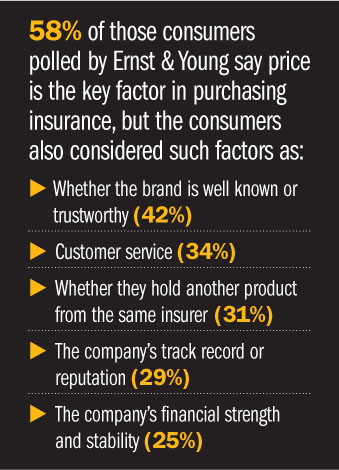Consumers today have new ways of buying and shopping for insurance, and insurers have new ways of delivering products to their customers—but do insurers truly understand what it takes to attract and retain customers in today's market?
 Two recent studies attempt to provide insight into what consumers are looking for—but their findings differ in some key areas regarding consumer habits.
Two recent studies attempt to provide insight into what consumers are looking for—but their findings differ in some key areas regarding consumer habits.
A report from Conning Research & Consulting, “Consumer Trends in Personal Lines Insurance,” says consumers today are more comfortable shopping online, and this preference is driving Personal Auto market development via growth in direct business from the Internet.
Recommended For You
Want to continue reading?
Become a Free PropertyCasualty360 Digital Reader
Your access to unlimited PropertyCasualty360 content isn’t changing.
Once you are an ALM digital member, you’ll receive:
- Breaking insurance news and analysis, on-site and via our newsletters and custom alerts
- Weekly Insurance Speak podcast featuring exclusive interviews with industry leaders
- Educational webcasts, white papers, and ebooks from industry thought leaders
- Critical converage of the employee benefits and financial advisory markets on our other ALM sites, BenefitsPRO and ThinkAdvisor
Already have an account? Sign In Now
© 2025 ALM Global, LLC, All Rights Reserved. Request academic re-use from www.copyright.com. All other uses, submit a request to [email protected]. For more information visit Asset & Logo Licensing.








